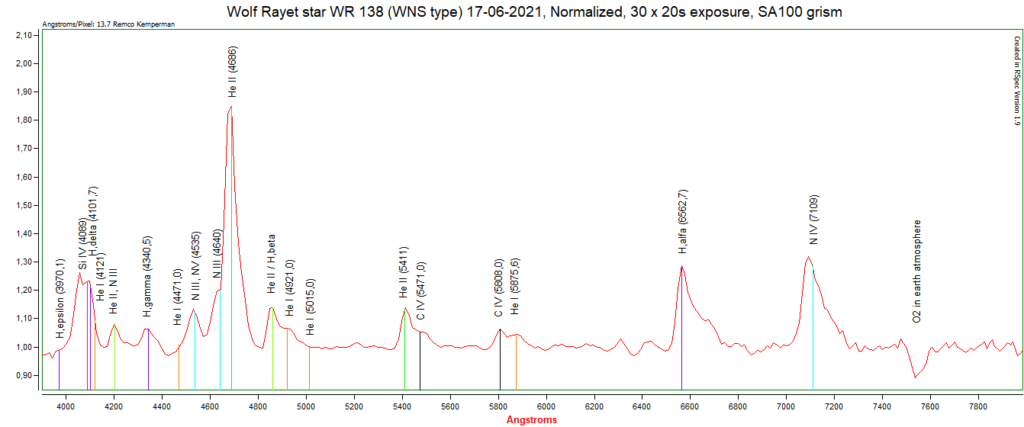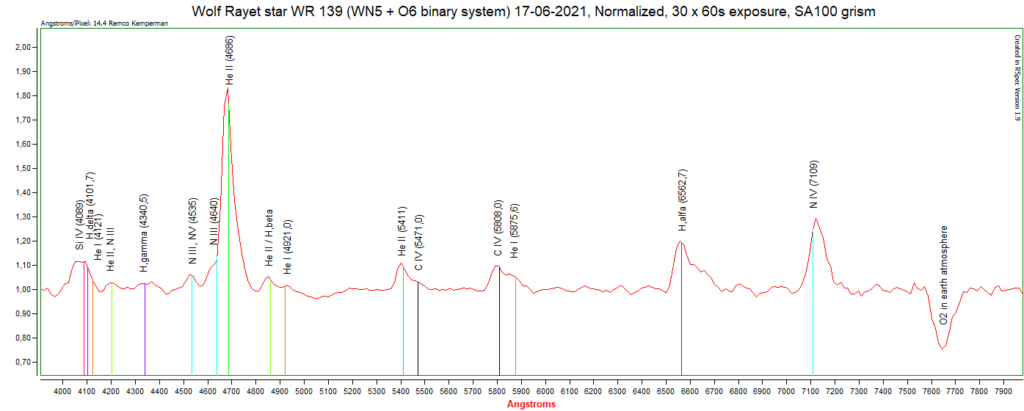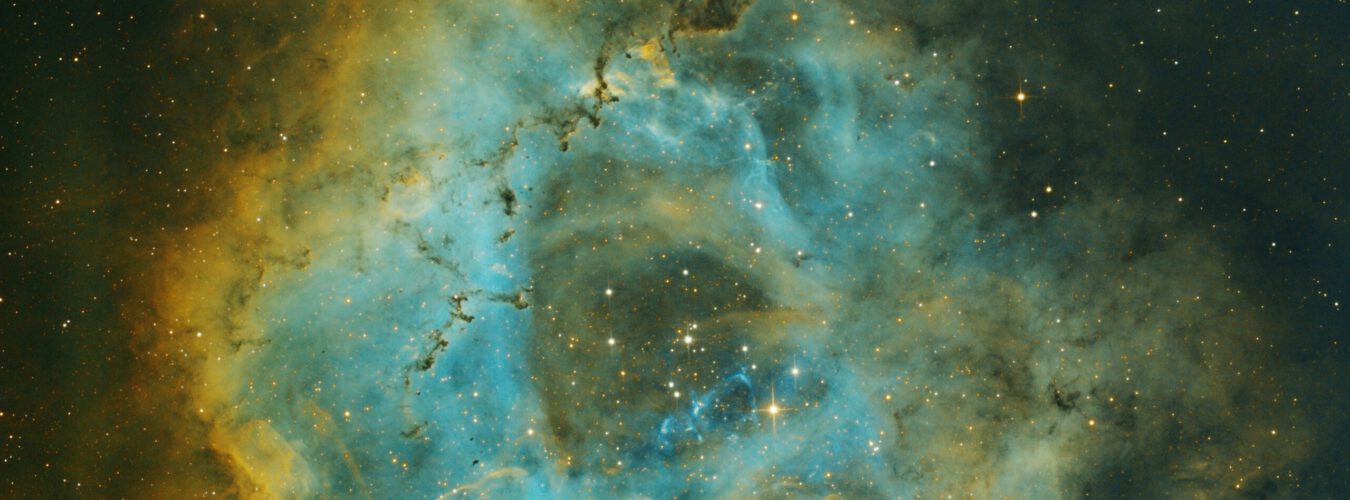Wolf-Rayet stars are very massive stars that began their live as an O-type star. These the most massive and luminous stars that exist. They have masses from 20 up to 100 times that of the Sun. Such a star burns through its fuel much faster then lighter stars such as our Sun.
Wolf-Rayet stars are rare. About 200 are known in our milky way. O-type stars in itself are rare, ande the Wolf-Rayet phase is short. This phase happens when the star is allready fusing heavier elements then hydrogen and building up shells of different elements.
Where the Sun is burning hydrogen for about 10 billion years (109), O-type stars burn hydrogen for only 10 million (106 ) years. After that the star starts fusing heavier elements. Each heavier element fuses faster so the total live span of such a star is not much more then 10 million years.
When the star is late in its life span, the lightpressure from all the fusion layers on top of each other is so large that the outer layers are blown of. In the case of WR 136 this has allready happened. The thrown of material has now formed the Crescent nebula in Cygnus. WR 136 is in the center of that.
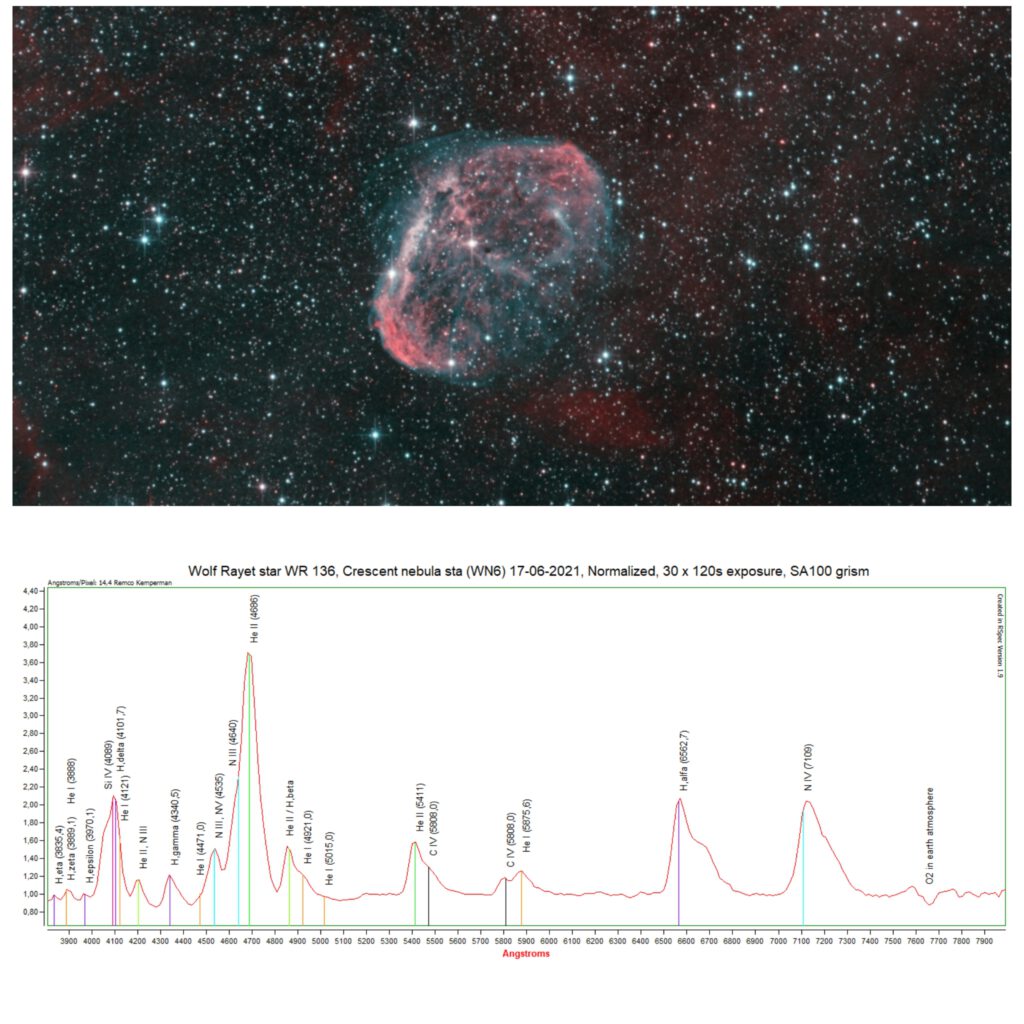
This Crescent nebula is made up of mainly hydrogen gas. In the emmission spectrum of the star can be seen that the hydrogen emission lines are relatively weak because a lot of it has left the outer envelope. The Helium lines (He) are strong here, and some other elements that are formed in layers below can be seen, such as Nitrogen (N), and a little bit of carbon (C).
When Iron (Fe) in the core starts to fuse, the star is doomed. Iron fusion costs energy instead of producing it. The core collapses and the outer layers crash down on it with ridicilous speed. This triggers the core to collapse in to a neutron star or black hole. The outer layers falling in are squeezed so hard that the bounce back out, and because of the heat and pressure, heavier elements are fused. This is what we see in a supernova.

WR 136 is a WN6 type Wolf-Rayet star. The N stands for Nitrogen. This means that Nitrogen emission lines are strong. In the picture above I drew circles which layers we are seeing in this WN6 spectrum.
WR 140 is another Wolf Rayet star in Cygnus, of type WC7. This star shows strong carbon lines (C), which is formed deeper in the star. This star is therefor further in the process of expelling its outer layers.
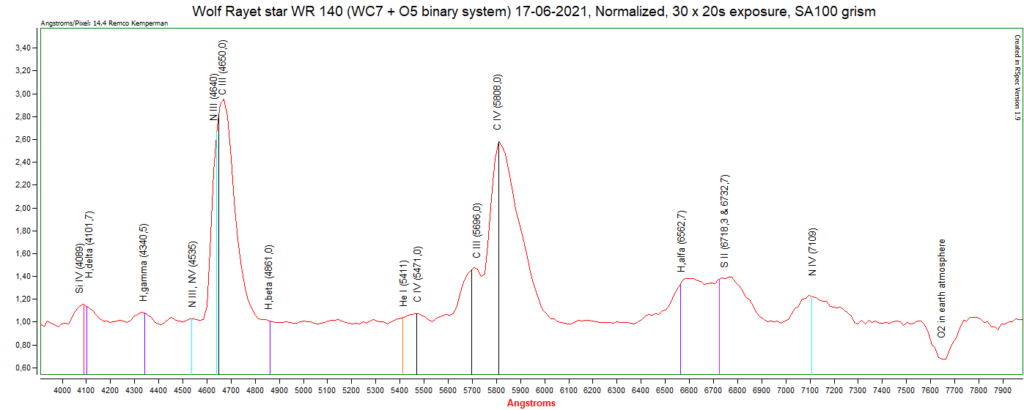
This star happens to be in a binary system with another O type star. Both stars in this binary started as an O type star. So this is probably going to be a binary neutron star or binary black hole system when both stars have gone super nova. Something gravitional wave observatories can pick up in the far future!
Below are two other spectra of Wolf-Rayet stars in Cygnus which I took. Both WN type (for Nitrogen). and the last one is in a binary system with another O star again.
By the way, the information that it is in a binary system can’t be seen in these spectra. For that high resolution spectroscopy is needed.
